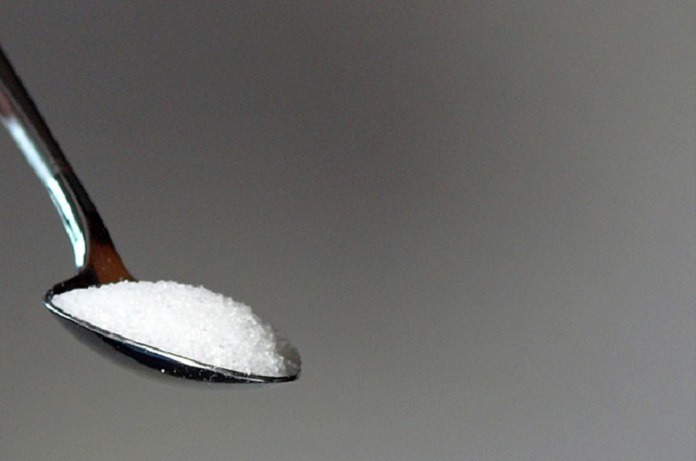A recent study examined the effects of common artificial sweeteners on two bacteria found in the human gut. The addition of the equivalent of two cans of diet soda significantly increased the pathogenicity (ability to cause disease) of the bacteria on human gut cells.1
The study, published in the International Journal of Molecular Sciences, focused on the bacteria E. coli (Escherichia coli) and E. faecalis (Enterococcus faecalis) which are both found in the human gut from birth.2 The gut microbiome contains more than 100 trillion microbes. Some of these are beneficial for health and some can pose a threat. Both E. coli and E. faecalis both help encompass a healthy gut microbiome.2
Researchers from Anglia Ruskin University in the U.K. focused on how the interaction of both E. coli and E. faecalis with the gut lining was affected by three artificial sweeteners: saccharin, sucralose, and aspartame. All experiments were conducted artificially (not in a living organism) using bacterial cultures and a model of human gut cells called Caco-2 cells.
Some artificial sweeteners increased biofilm production
The researchers examined the effect of each sweetener on biofilm formation. Biofilms can increase the resistance of bacteria to antimicrobial treatments, and these bacteria are also more likely to release toxins.1
The artificial sweeteners in a concentration equivalent to two cans of diet soda were added. There was significant biofilm formation when E. coli was exposed to all three sweeteners, but only aspartame showed significant biofilm growth in the E. faecalis culture.
Artificial sweeteners increased bacterial adhesion and invasion of gut cells
The ability of the bacteria to adhere to and invade intestinal cells was observed using the Caco-2 cell model. Some bacteria, such as E. faecalis, has been shown to pass through cells lining the gut and enter into the bloodstream where it gains the ability to cause sepsis, or poisoning of blood.3 E. faecalis has also been shown to gather and grow around the spleen, liver, and lymph nodes.4
All three sweeteners were found to significantly increase adhesion. Both aspartame and sucralose significantly increased the invasive ability of both bacteria. Only E. faecalis showed increased invasive properties when exposed to saccharin.
Artificial sweeteners increased the production of toxins
Substances released from both bacteria were examined. E. coli, when exposed to saccharin and sucralose, released substances that significantly decreased the intestinal cell viability, while E. faecalis produced substances that significantly reduced cell viability when exposed to aspartame and sucralose.
Previous research had shown that artificial sweeteners can alter the composition of gut bacteria in the microbiome.5 However, according to co-author if this study Dr. Hayoyi Chichger, “Our study is the first to show that some of the sweeteners most commonly found in food and drink – saccharin, sucralose, and aspartame – can make normal and ‘healthy’ gut bacteria become pathogenic”.1
Artificial sweeteners have shown success in helping with weight loss6 and in people with type two diabetes.7 Thus, reverting to a natural, high-calorie sweetener like sucrose may not be the best alternative to artificial sweeteners, Dr. Chichger noted.1
More research needs to be done to better understand the associated health risks of sweeteners so individuals can select the sweetener that’s right for them.
References
- Green, J. (2021). Study shows potential dangers of sweeteners. EurekAlert! Accessed on July 1, 2021. Retrieved from https://www.eurekalert.org/pub_releases/2021-06/aru-ssp062321.php.
- Shil, A. and H. Chichger. (2021). Artificial Sweeteners Negatively Regulate Pathogenic Characteristics of Two Model Gut Bacteria, E. coli and E. faecalis. International Journal of Molecular Sciences; 22(10): 5228. Doi: 10.3390/ijms22105228.
- Ghoshal, U.C. et al. (2002). Strongyloides stercoralis infestation associated with septicemia due to intestinal transmural migration of bacteria. Journal of Gastroenterology and Hepatology; 17(12): 1331-1333. Doi: 10.1046/j.1440-1746.2002.02750.x.
- Wells, C.L. et al. (1990). Evidence for the Translocation of Enterococcus faecalis across the Mouse Intestinal Tract. The Journal of Infectious Diseases; 162(1): 82-90. Doi: 10.1093/infdis/162.1.82.
- Suez, J. et al. (2014). Artificial sweeteners induce glucose intolerance by altering the gut microbiota. Nature; 514: 181-186. Doi: 10.1038/nature13793.
- Blackburn, G.L. et al. (1997). The effect of aspartame as part of a multidisciplinary weight-control program on short- and long-term control of body weight. The American Journal of Clinical Nutrition; 65(2): 409-418. Doi: 10.1093/ajcn/65.2.409.
- Gardner, C. et al. (2012). Nonnutritive sweeteners: Current use and health perspectives: A scientific statement from the american heart association and the american diabetes association. Diabetes Care; 35: 1798–1808.
- Image by moritz320 from Pixabay



